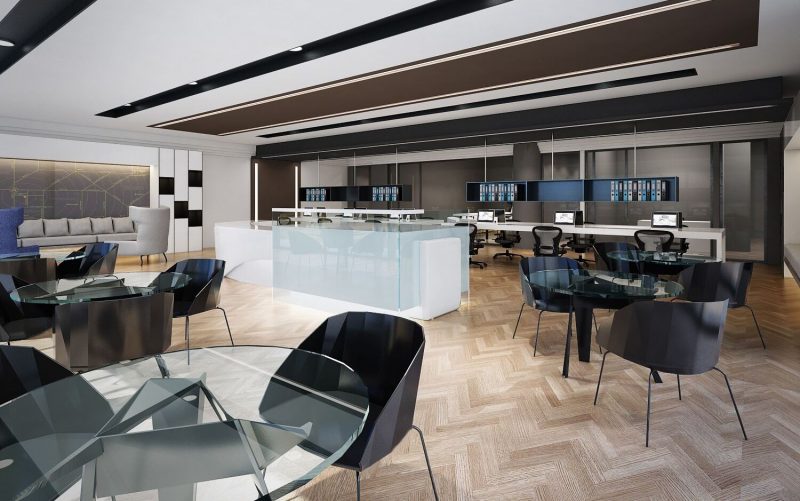Whether you’re relocating, merging or aspiring to today’s business demands, organisational change is inevitable. Most of us are naturally cautious to change, however, effective workplace design can add value to your organisation and refresh a company culture for the better. The following guide addresses the importance of design during large-scale change and how to design a new space that works for everyone.
The business case for workplace design
When an organisation is looking to bring together diverse groups under one roof after a relocation or merger, effective design can often be the best solution for defining its culture. Think of great design as the glue that holds your brand message and collective vision together when everything else is in a state of flux.
We have emphasised the importance of physical environment on behaviour, mood and performance at length. When a workforce is engaged and productive as a result of workplace design, the costs related to renovation and redesign should be viewed as worthwhile investments.
A well-designed workplace has the potential to increase productivity, boost creativity and provide communal spaces which help others to thrive. Organisational change is the perfect opportunity to redesign long-standing issues to make your business a better place.
5 CONSIDERATIONS FOR YOUR BUSINESS
People
Workplaces must provide a choice of work settings based on collaboration, communication and concentration, according to the British Council for Offices. Understanding how your staff want to work and how their personality profiles will work together in a variety of office settings are key to maximising office design success. Think of a workplace in terms of value rather than cost, and take the time to measure the impacts of your workplace on people and their outputs.
Community
Cohesive communities make any business thrive. Small groups working closely together creates an innovative, communal and equal workplace, as we are all, at heart, social creatures. A workplace should act as an enabler for effective output, rather than prohibit staff by placing them inside rigid silos. Considering we spend almost 38 hours a week on average at work, the office is an ideal place for building a community, which people want to spend time in.
Personalities
Businesses select employees based on their individual personalities and skillsets, but psychologists believe that to get the most out of a workforce, companies must also consider how their staff behave as a collective group. In many cases, the group dynamic has a knock on effect on individual behaviour, so it makes sense to create dynamic spaces where individuals can easily interact and communicate.
Wellbeing and health
Often suppressed as another modern buzz term, wellbeing is in fact strongly linked to all the things a great business needs: innovation, creativity and productivity. Numerous studies have found that placing people at the heart of design, construction and operations is an effective way to meet staff needs and boost wellbeing. Design, therefore, comes into its own once businesses make a conscious effort to shape places around their people.
Human requirements
Wellbeing at work is also linked to how we instinctually interact with our natural environments as human beings. We all have physiological needs, our normal functions as organisms, which can’t be restricted by synthetic spaces. Indoor air quality, for example, can boost productivity by 11%, while thermal comfort has a huge impact on employee satisfaction. Access to daylight and adequate indoor lighting is crucial for our mental health, and when our bonds to nature are reflected in the design of a space, we feel a sense of wellbeing.
Our expert team can design your new space in a way that works for everyone. Every job is important to us, so please feel free to get in touch anytime, whether for general enquires or with a more detailed brief, on +442079657113


